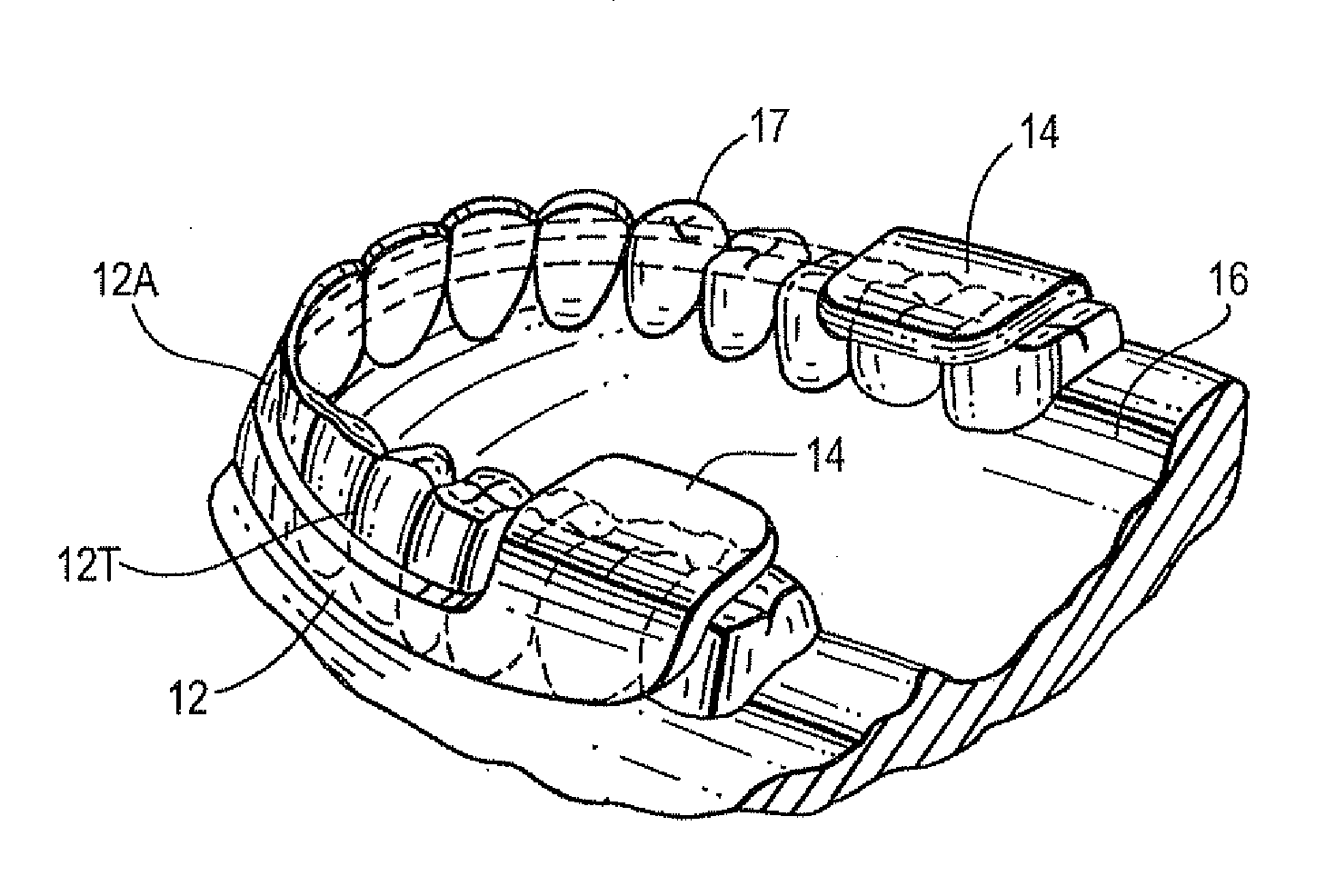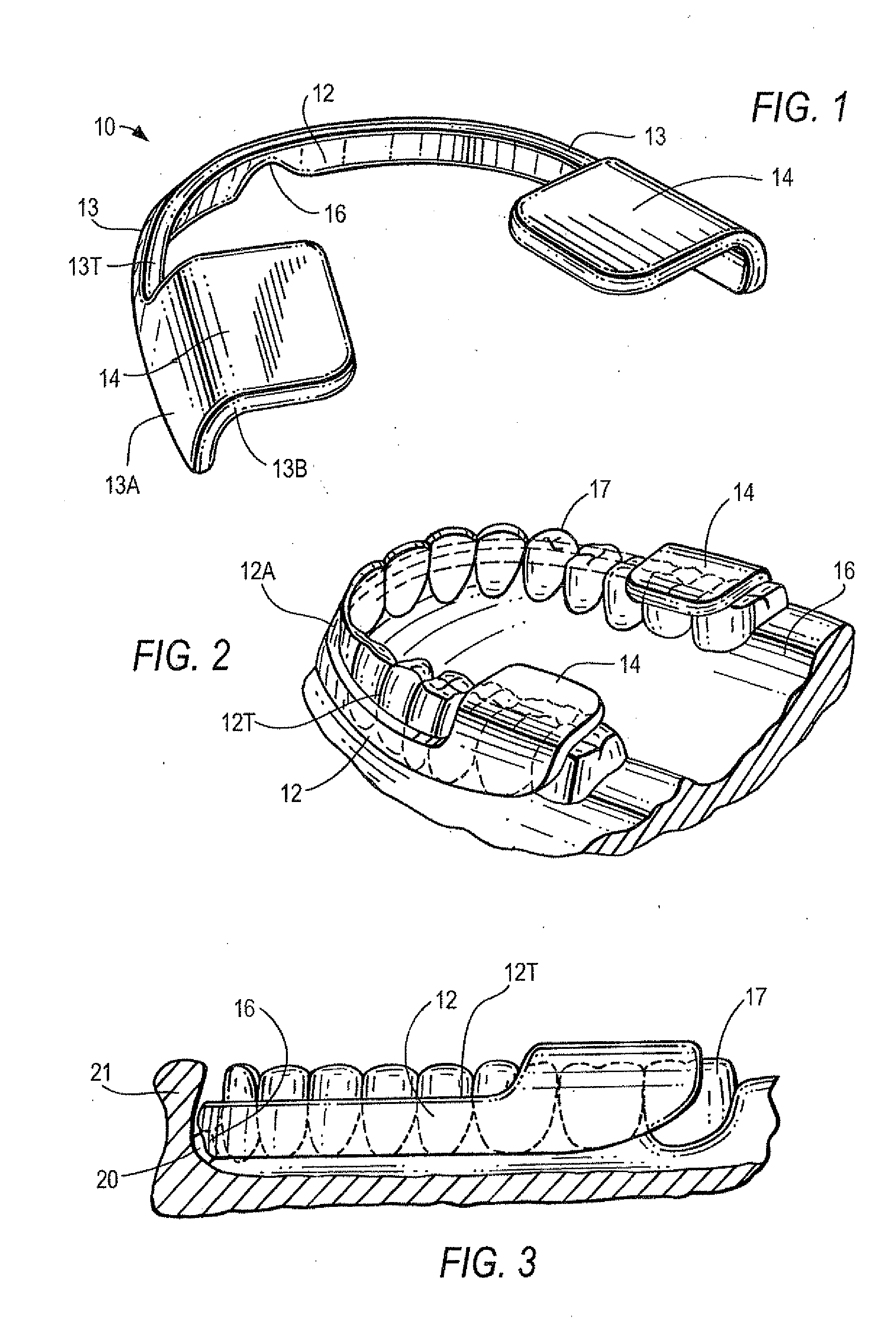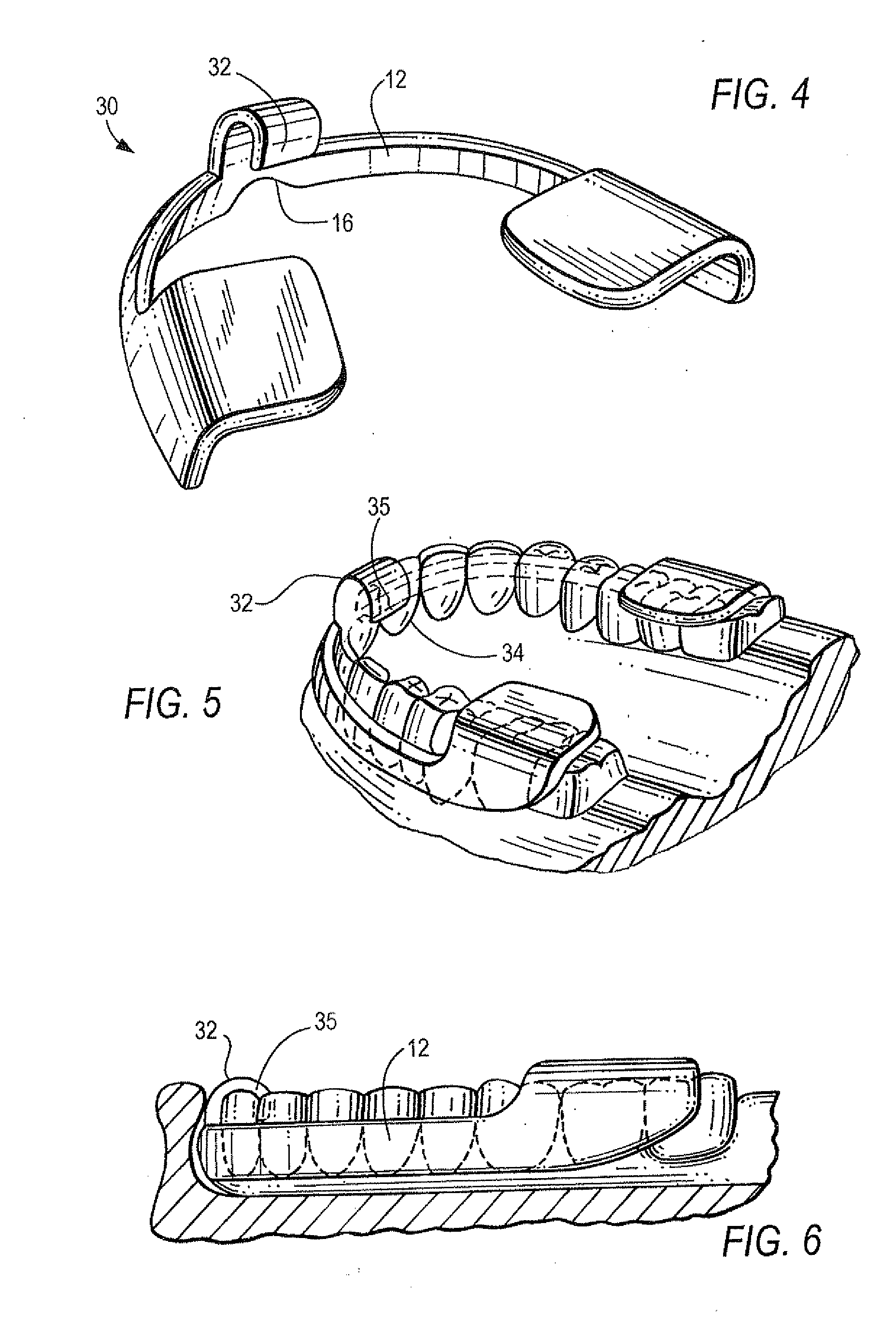Bruxism protective device
a protective device and bruxism technology, applied in the field of intraoral devices, can solve the problems of temporomandibular joint dysfunction and headaches, dislocation of the jaw, and pain in the myofacial muscle, and achieve the effects of simple design, minimal size structure, and ease of us
- Summary
- Abstract
- Description
- Claims
- Application Information
AI Technical Summary
Benefits of technology
Problems solved by technology
Method used
Image
Examples
first embodiment
[0068]FIGS. 1-3 illustrate the new bruxism protective device 10 which includes an elongated band portion 12 of general U-shape having a closed end and legs 13 extending rearward along a front-to-rear direction, each of said legs terminating as a foot 13A having a top edge 13B above the top edge 13T of said front end and leg 13, and a bite pad 14 extending medially from one of said feet 13A. This is a one-piece molded device of a flexible and resilient plastic such as a thermoplastic elastomer, for example DuPont's Elvaloy™, PVC, silicones and other plastics. The required softness-toughness and resilient cushion characteristics may be achieved, for example, with material of Durometer index 00-A on the Shore scale. In a still further variation the above-mentioned material characteristics may be achieved by a laminate having a soft surface and a tougher inner layer. In the embodiment shown the band thickness is abut 1 / 16″, and the bite ad thickness is about 3 / 32″, and the length of the...
embodiment 100
[0079]FIGS. 21 and 22 illustrate a still further embodiment 100 of the new bruxism protective device, this embodiment being essentially the same as device 10 in FIG. 1, but inverted and used with band 111 adjacent to the upper teeth and upper jaw, and bite pads 112 still situated between sets of upper and lower rear teeth. With device 100, its recess 16 extends upward instead of downward to be clear of the upper frenulum. In this particular device 100, bite pads 112 have in their upper surfaces longitudinal spaced apart grooves 113.
embodiment 115
[0080]FIGS. 23-2.5 show a still further embodiment 115 with a front bite plate-hook part 116 and bite plates 118, the entire structure having smooth transition areas between component parts which is beneficial for manufacture, appearance and ultimate use. In these figures this bite pad is oriented for hook 116 to engage upper front teeth; however, this device can be inverted so that hook 116 engages lower front teeth. In this embodiment, the bite pads are a continuous extension of the band at an elevation and in a plane below the bottom edge of the band.
PUM
 Login to View More
Login to View More Abstract
Description
Claims
Application Information
 Login to View More
Login to View More - R&D
- Intellectual Property
- Life Sciences
- Materials
- Tech Scout
- Unparalleled Data Quality
- Higher Quality Content
- 60% Fewer Hallucinations
Browse by: Latest US Patents, China's latest patents, Technical Efficacy Thesaurus, Application Domain, Technology Topic, Popular Technical Reports.
© 2025 PatSnap. All rights reserved.Legal|Privacy policy|Modern Slavery Act Transparency Statement|Sitemap|About US| Contact US: help@patsnap.com



